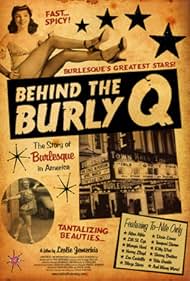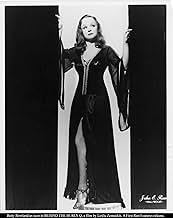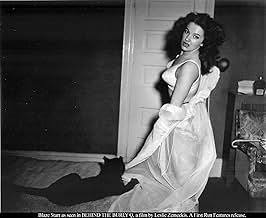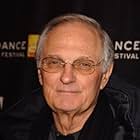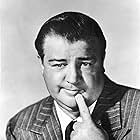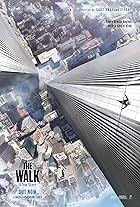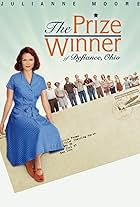Leslie Zemeckis's rousing documentary takes a behind- the-velvet-curtain peek at the golden age of burlesque, meeting the women (and men) who pushed the envelope of social propriety.Leslie Zemeckis's rousing documentary takes a behind- the-velvet-curtain peek at the golden age of burlesque, meeting the women (and men) who pushed the envelope of social propriety.Leslie Zemeckis's rousing documentary takes a behind- the-velvet-curtain peek at the golden age of burlesque, meeting the women (and men) who pushed the envelope of social propriety.
- Awards
- 1 nomination
- Director
- Writer
- All cast & crew
- Production, box office & more at IMDbPro
Storyline
Did you know
- SoundtracksKeep Young and Beautiful
Written by Al Dubin and Harry Warren
Performed by Starlite Orchestra and Singers
Courtesy of Countdown Media
Featured review
I enjoyed almost everything about this delightful documentary except its title: I've never encountered an actual human being who mispronounces the word 'burlesque' as 'Burly Q' or 'burleycue', and I don't know why fictional characters (such as Will Parker in the musical 'Oklahoma!') keep using this mispronunciation.
Despite that titular development, 'Behind the Burly Q' offers some rare and titillating footage from the days of old-time burlesque: Stateside only, though. I wish there had been at least a mention of London's legendary Windmill Theatre.
An impressive number of veteran strippers are interviewed here, offering their memories. Also on hand are Lou Costello's daughter, and Alan Alda. He's introduced here as "son of Robert Alda", and only later is it established that the senior Alda was a small-time burlesque comedian and singer. I wish that this documentary had mentioned that Robert Alda later had a more prestigious career in Hollywood films and Broadway musicals. Alan Alda offers some candid memories of his childhood as the son of a burlesque performer, including a nice anecdote about his sibling rivalry with a pig.
I was fascinated by much of the material here, including descriptions of how the strippers had to vary their striptease to satisfy local ordinances. For instance, in Green Bay, Wisconsin it was unlawful to remove clothing onstage, so the strippers had to duck into the wings to remove each garment, then come back onstage without it. Allegedly, audiences in Indianapolis were especially notorious for their obsession with the strippers' mammary endowments. (Surely this was the case in every other venue as well?)
Some legendary strippers who have made their exit and gone to that great Gazeeka Box in the sky are recalled here, including Lili St Cyr, Ann Corio and Gypsy Rose Lee. Sadly, nobody here has a kind word for Gypsy.
One stripper recounts the tragic story of the death of Lou Costello's infant son, but she implies that Costello was performing with her in burlesque at the time. In fact, he and Bud Abbott were starring in a radio series, and Costello made his scheduled radio broadcast that night despite his loss. This documentary includes a clip from a cross-talk comedy routine between Costello and the unjustly forgotten comedian Sidney Fields. I was disappointed that the clip shown here builds to the routine's punchline but then omits the punchline. American comedian Sidney Fields (no relation to English comedian Sid Field) spent much of his career writing comedy material for other performers, including Jackie Gleason. Also seen here, far too briefly, is burlesque comedian Pinky Lee in a minuscule clip from his 1950s kiddy show.
There's a brief mention of Costello's friend and fellow burlesque comic Rags Ragland. I wish that this documentary had told the hilarious true story about the occasion when an angry gun-toting stripper chased Ragland across the stage during Costello's "Crazy House" routine, and the audience thought it was part of the act!
I was very pleased that this documentary gives tribute to Bud Abbott's splendid timing as Costello's straight man, and I wish that more footage of Abbott had been included.
This documentary very briefly touches upon two lesser-known aspects of burlesque: the female impersonators and the strippers who were Negro or Oriental. I wish that a bit more information had been given here.
One stripper mentions that she dated John F Kennedy, while another recalls working in Jack Ruby's strip joint at the time of Kennedy's assassination.
These strippers certainly earned their money; they were worked hard, many of them came from abusive backgrounds and several were in abusive relationships while performing. At least they made more money taking off their clothes than they would have made in more conventional professions.
'Behind the Burly Q' is a delight: a documentary that's entertaining while also being informative. I was pleased that this movie verified something I've been asserting for years: namely, that early burlesque was family entertainment, with an absolute embargo on 'blue' material, and that the form only gradually moved raunchwards.
I'll rate 'Behind the Burly Q' 9 out of 10. Run all the way to Floogle Street to see it, and bring the top banana. Better yet: meet me round the corner in a half an hour!
Despite that titular development, 'Behind the Burly Q' offers some rare and titillating footage from the days of old-time burlesque: Stateside only, though. I wish there had been at least a mention of London's legendary Windmill Theatre.
An impressive number of veteran strippers are interviewed here, offering their memories. Also on hand are Lou Costello's daughter, and Alan Alda. He's introduced here as "son of Robert Alda", and only later is it established that the senior Alda was a small-time burlesque comedian and singer. I wish that this documentary had mentioned that Robert Alda later had a more prestigious career in Hollywood films and Broadway musicals. Alan Alda offers some candid memories of his childhood as the son of a burlesque performer, including a nice anecdote about his sibling rivalry with a pig.
I was fascinated by much of the material here, including descriptions of how the strippers had to vary their striptease to satisfy local ordinances. For instance, in Green Bay, Wisconsin it was unlawful to remove clothing onstage, so the strippers had to duck into the wings to remove each garment, then come back onstage without it. Allegedly, audiences in Indianapolis were especially notorious for their obsession with the strippers' mammary endowments. (Surely this was the case in every other venue as well?)
Some legendary strippers who have made their exit and gone to that great Gazeeka Box in the sky are recalled here, including Lili St Cyr, Ann Corio and Gypsy Rose Lee. Sadly, nobody here has a kind word for Gypsy.
One stripper recounts the tragic story of the death of Lou Costello's infant son, but she implies that Costello was performing with her in burlesque at the time. In fact, he and Bud Abbott were starring in a radio series, and Costello made his scheduled radio broadcast that night despite his loss. This documentary includes a clip from a cross-talk comedy routine between Costello and the unjustly forgotten comedian Sidney Fields. I was disappointed that the clip shown here builds to the routine's punchline but then omits the punchline. American comedian Sidney Fields (no relation to English comedian Sid Field) spent much of his career writing comedy material for other performers, including Jackie Gleason. Also seen here, far too briefly, is burlesque comedian Pinky Lee in a minuscule clip from his 1950s kiddy show.
There's a brief mention of Costello's friend and fellow burlesque comic Rags Ragland. I wish that this documentary had told the hilarious true story about the occasion when an angry gun-toting stripper chased Ragland across the stage during Costello's "Crazy House" routine, and the audience thought it was part of the act!
I was very pleased that this documentary gives tribute to Bud Abbott's splendid timing as Costello's straight man, and I wish that more footage of Abbott had been included.
This documentary very briefly touches upon two lesser-known aspects of burlesque: the female impersonators and the strippers who were Negro or Oriental. I wish that a bit more information had been given here.
One stripper mentions that she dated John F Kennedy, while another recalls working in Jack Ruby's strip joint at the time of Kennedy's assassination.
These strippers certainly earned their money; they were worked hard, many of them came from abusive backgrounds and several were in abusive relationships while performing. At least they made more money taking off their clothes than they would have made in more conventional professions.
'Behind the Burly Q' is a delight: a documentary that's entertaining while also being informative. I was pleased that this movie verified something I've been asserting for years: namely, that early burlesque was family entertainment, with an absolute embargo on 'blue' material, and that the form only gradually moved raunchwards.
I'll rate 'Behind the Burly Q' 9 out of 10. Run all the way to Floogle Street to see it, and bring the top banana. Better yet: meet me round the corner in a half an hour!
- F Gwynplaine MacIntyre
- Apr 22, 2010
- Permalink
Details
Box office
- Budget
- $250,000 (estimated)
- Gross US & Canada
- $23,889
- Opening weekend US & Canada
- $3,958
- Apr 25, 2010
- Gross worldwide
- $23,889
- Runtime1 hour 37 minutes
- Color
Contribute to this page
Suggest an edit or add missing content

